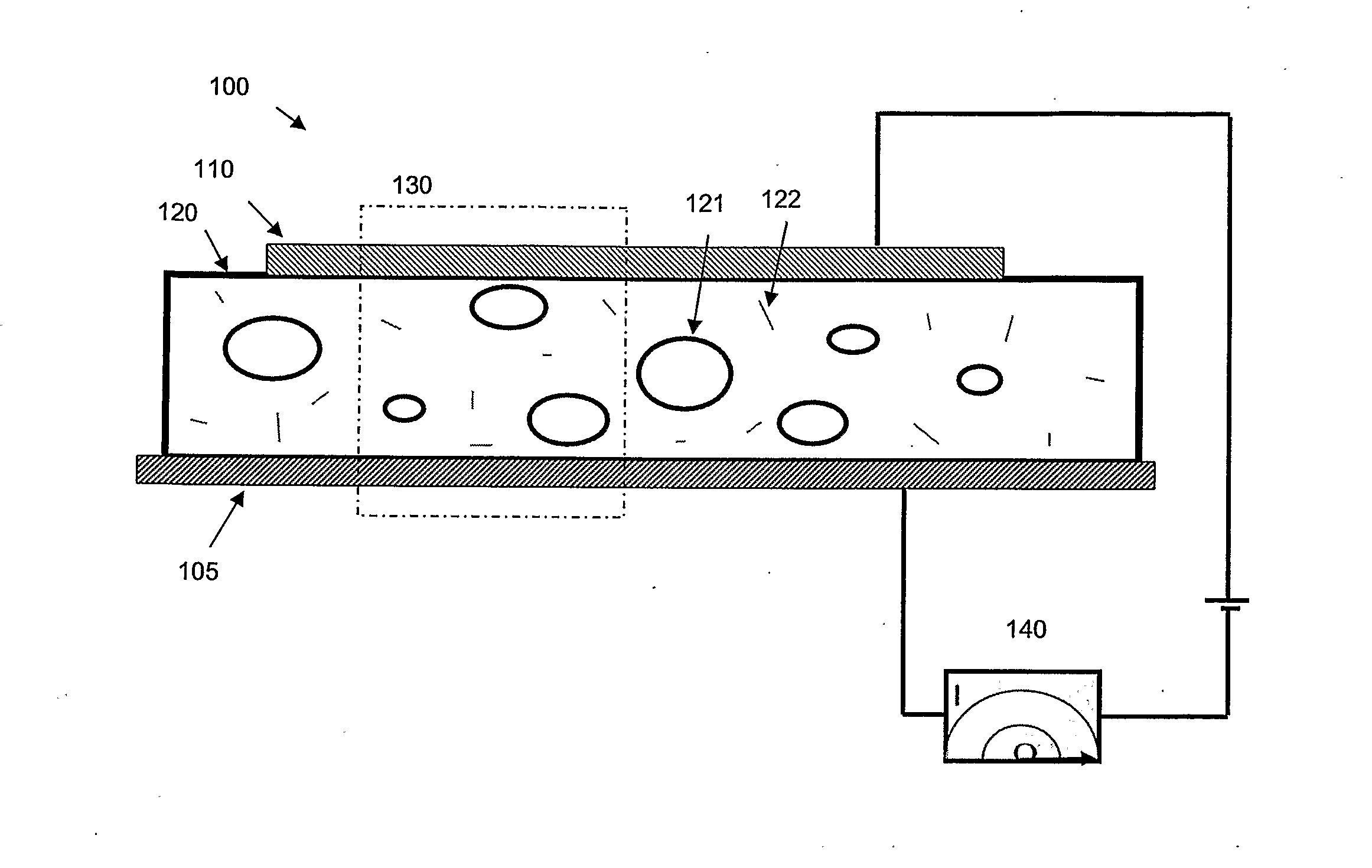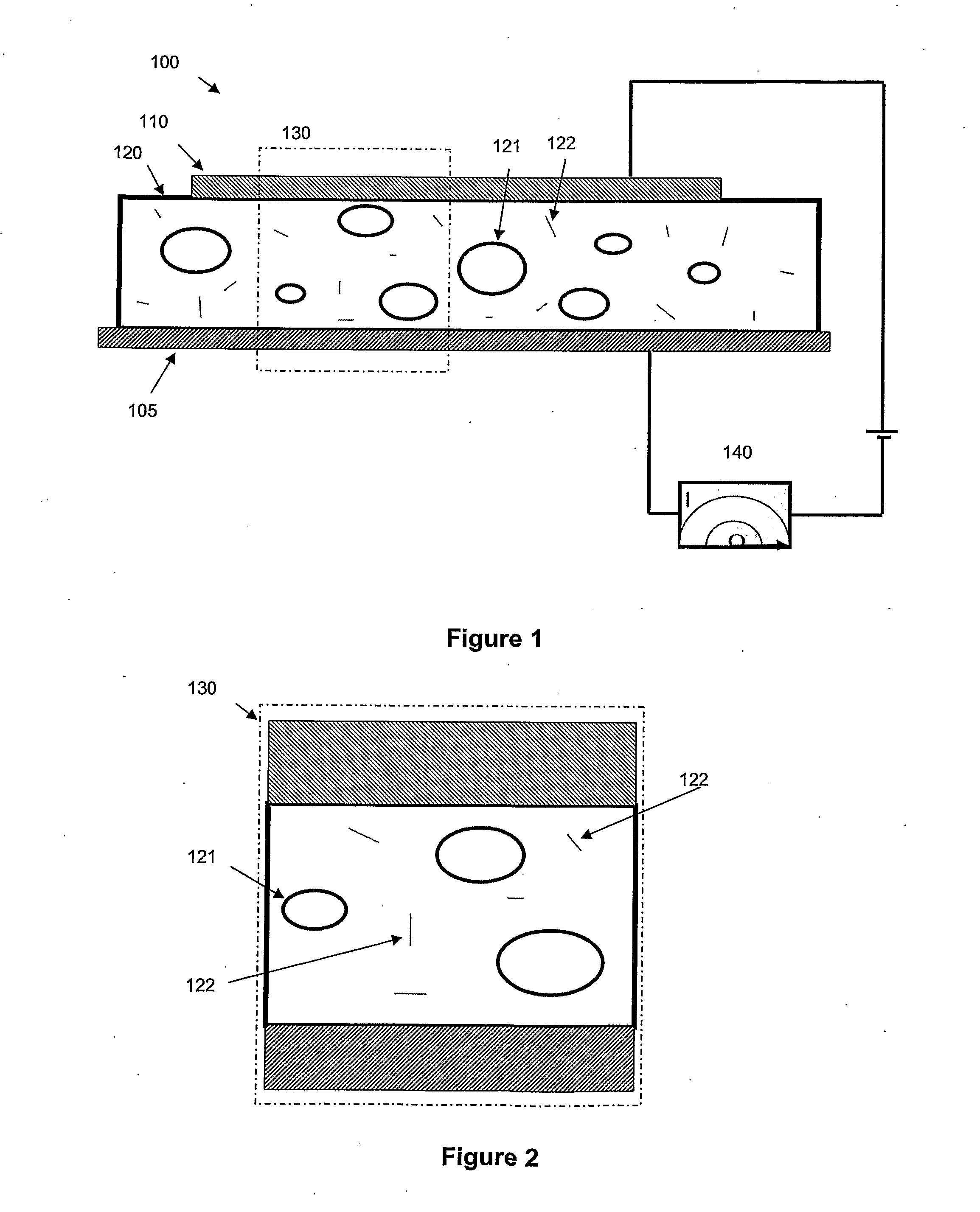Porous Film Sensor
a film sensor and porous film technology, applied in the field of film, can solve the problems of thermal budget restrictions, mechanical integrity of the sensor on a flexible substrate, surface roughness, etc., and achieve the effects of improving detection or measurement, film being more amenable to deformation, and improving conductivity
- Summary
- Abstract
- Description
- Claims
- Application Information
AI Technical Summary
Benefits of technology
Problems solved by technology
Method used
Image
Examples
Embodiment Construction
[0019]This invention relates to a film made of a polymer and nanomaterials. More particularly, this invention relates to the formation of pores in the film. Still more particularly, this invention relates to a pressure transducer made of the film that has a greater sensitivity because of pores in the film. FIGS. 1-5 illustrate one particular embodiment of a pressure transducer in accordance with this invention, and FIG. 6 illustrates the results in terms of sensitivity of such an embodiment. For clarity, a component shown in more than one figure has been given the same reference numeral in the different figures.
[0020]FIG. 1 shows pressure sensor 100 including film 120 that is an exemplary embodiment of this invention. No force is applied to pressure sensor 100. Film 120 is made of an electrically insulating polymer with electrically conducting carbon nanotubes 122. Other examples of nanomaterials that may be used include, but are not limited to, nanowires. One example of an electric...
PUM
| Property | Measurement | Unit |
|---|---|---|
| thickness | aaaaa | aaaaa |
| thick | aaaaa | aaaaa |
| temperature | aaaaa | aaaaa |
Abstract
Description
Claims
Application Information
 Login to View More
Login to View More - R&D
- Intellectual Property
- Life Sciences
- Materials
- Tech Scout
- Unparalleled Data Quality
- Higher Quality Content
- 60% Fewer Hallucinations
Browse by: Latest US Patents, China's latest patents, Technical Efficacy Thesaurus, Application Domain, Technology Topic, Popular Technical Reports.
© 2025 PatSnap. All rights reserved.Legal|Privacy policy|Modern Slavery Act Transparency Statement|Sitemap|About US| Contact US: help@patsnap.com



